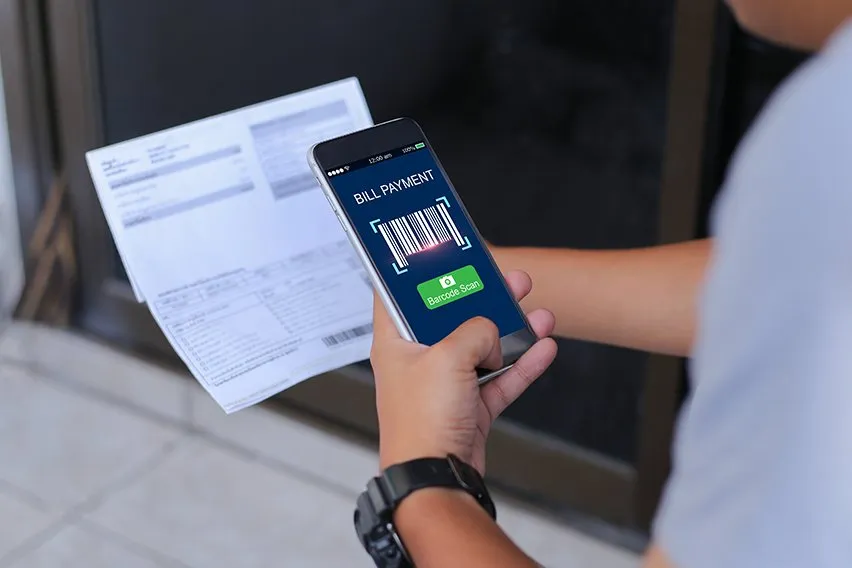What Is a Wire Transfer & How Does It Work?

A wire transfer is a way for people and institutions to send money electronically around the world. Banks and wire transfer services capable of transferring currency conduct wire transfers.
Moreover, wire transfers need such agencies that can send and receive money, as not everyone has the means to do it. They also need information from the party that is initiating the transfer.
This can include things like the name of the recipient and their account number. Wire transfers don’t actually exchange cash. Rather, they get settled by electronic means. Both domestic and international banks can perform wire transfers.
Read on to learn how these transfers take place. We show what goes on behind the scenes so you can better understand how wire transfers work.
Here’s What We’ll Cover:
Are There Any Concerns in Using Wire Transfers?
How It Works
Wire transfers allow for the fast and safe transfer of funds between parties. What’s more, they allow two parties to transfer funds even if they are indifferent (geographical) locations.
Transfers are usually initiated between financial institutions, such as banks. Participating institutions share information about who is receiving the payment. They also review their bank account details and transfer amounts.
The sender pays the transaction fee in advance at their financial institution. The sending party must provide the following information to its bank:
- Recipient name
- Recipient address
- Recipient contact number
- Other personal information relating to the recipient
- Recipient financial institution information (account and branch numbers)
- Receiving financial institution information (institution name, address, and routing number or SWIFT code)
- Reason for transfer

Once the information gets recorded, the wire transfer can begin. The originating company uses a secure system to send a message with instructions. This explains payment to the recipient’s institution (SWIFT or Fedwire, for example).
The receiving bank receives the data from the originating financial institution. It then deposits its reserves into the proper account. The two institutions settle the electronic payment between themselves after depositing the funds.
Wire transfers are an important tool for people who need to send money quickly and safely. This is especially so when they are not in the same location. They also allow entities to transfer large amounts of funds.
However, wire transfer companies limit how much you can transfer. Still, these limits are often quite high. For example, a company might use wire transfers to pay for large purchases from international suppliers.
But businesses attempting to send excessive amounts of money to one another will raise suspicions. Thus, it is important to seek alternative means of exchanging large amounts of money.
Types of Wire Transfers
You can send money via domestic or international money transfers. What’s more, either type of wire transfer method can be intra-bank or inter-bank. Intra-bank transfers let you send money between two different financial institutions. Inter-bank transfers let you send money between the same banking companies.
Domestic Transfers
A domestic bank wire transfer is any type of wire payment between two different banks or institutions in the same country or region. Domestic transfers can be inter-bank transfers or intra-bank transfers. For the transaction to go through, the sender may need the code or the recipient’s branch number.
These transactions are usually processed on the same day they were initiated and can be received within a few hours. This is because domestic wire transfers can come within one day only through the domestic Automated Clearing House (ACH).
International Transfers
International wire transfers are initiated in one country and settled in another country. The sender must initiate an international transfer. This is true even if they send money to someone in another country with an account in the same financial institution. These payments require bank routing or SWIFT codes.
These wire transfers are usually delivered within two working days. International wire transfers must clear domestic ACH and its foreign equivalents. Therefore, an extra day is necessary.
Are There Any Concerns in Using Wire Transfers?
For the most part, wire transfers are considered to be safe and reliable. Of course, it’s best if you know who is receiving them. Moreover, any time you use legit wire transfer services, you should require everyone involved to show proof of their identity. In doing so, anonymous wire transfers become impossible.
All international bank wires that originate in the United States are monitored. This kind of transfer of money is handled by the Office of Foreign Assets Control (OFAC). This division is part of the United States Treasury. Moreover, it ensures that funds sent overseas are not used for funding terrorist actions or for laundering money.
What’s more, OFAC is responsible for preventing the flow of funds to countries sanctioned by the United States government. What happens if OFAC suspects someone is breaking federal regulations? At that point, the financial institution sending funds has the right to freeze the transfer so that no money changes hands.
Wire transfers can get flagged for a variety of reasons. When this happens, officials become aware of possible misconduct by the sender or receiver. Such actions can include:
- Incoming wires and outgoing wires of identical dollar amounts
- Transfers to persons other than the account holder
- Transfers to countries considered safe-havens
- Large wire transfers between businesses
- Transfers without a viable reason
Any of the above will raise suspicions and result in an investigation. Organizations that need to send large amounts of cash should do so using a different method.
Wire Transfers in Action
When an institution sends money via wire transfer, physical cash isn’t exchanged. What instead happens is the bank gets the data concerning the transfer. Once received, the bank processes the account number and pulls the necessary funds from it to give to the recipient.
The bank has to verify the information from both the sender and receiver. This information includes:
- Names
- Addresses
- Account numbers
- Reason for transfer
- Additional relevant information
- Transfer amount
Once all of the necessary information is verified, the bank transfers the money where it’s supposed to go. It will then settle up on the back end with the other party’s bank.
Are Wire Transfers Safe?
As discussed above, there are several pieces of information that must first be verified. Legitimate money transfer providers will verify this information. And they do so before approving the transfer of funds. As long as you know who is receiving the funds, you can trust wire transfers to be both safe and secure.
Together, verifying information and knowing the party involved is usually enough to ensure safety. And in the event that there is suspicious activity, OFAC will typically flag and investigate it.
So as you can see, there are several fundamental ways to keep wire transfers secure and reliable. By preventing anonymous transfers, accountability remains present.

Why Use Wire Transfers?
Perhaps the single biggest benefit of using wire transfers is speed. People can send and receive funds almost immediately. Without such technology, people and businesses would have to rely on inefficient methods for sending money.
What’s more, wire transfers allow you to send money all over the world. This alone opens up business possibilities between companies and entities. It is easier to conduct business transactions thanks to wire transfers.
It’s also easier to work with foreign currency. And since there is little to no wait time, customer satisfaction is higher.
As discussed, there are several features in place to ensure the safety of wire transfers. When all of these things come together, electronic transfers prove their worth as a viable and reliable means of sending money.
Key Takeaways
The electronic transfer of funds has allowed for greater versatility between entities. As a business owner, you can enjoy wire transfers in different ways. It lets you offer your customers another way to pay you. And, you can pay for goods purchased overseas with international wires.
For assistance with payments in your business, we encourage you to download FreshBooks. This software gives you essential tools that make accepting and sending money easy. For example, FreshBooks lets you create invoices to send to clients.
And with a single click, you can accept payments. FreshBooks then deposits the money into your bank account. It’s all done with one application, so there’s no need to switch between several programs. Download FreshBooks today and try it free for 30 days. If you want more articles like this, visit our resource hub!
RELATED ARTICLES

 Competitive Pricing Strategy: Definition, Examples, Pros & Cons
Competitive Pricing Strategy: Definition, Examples, Pros & Cons What Is a Bill of Exchange?
What Is a Bill of Exchange? What Is Quick Ratio & How to Calculate It? Formula & Example
What Is Quick Ratio & How to Calculate It? Formula & Example What Expenses Can Be Claim on Tax Deductions Without Receipts?
What Expenses Can Be Claim on Tax Deductions Without Receipts? 4 Types of Depreciation Methods & Its Formula
4 Types of Depreciation Methods & Its Formula What Is Churn Rate & How To Calculate It?
What Is Churn Rate & How To Calculate It?